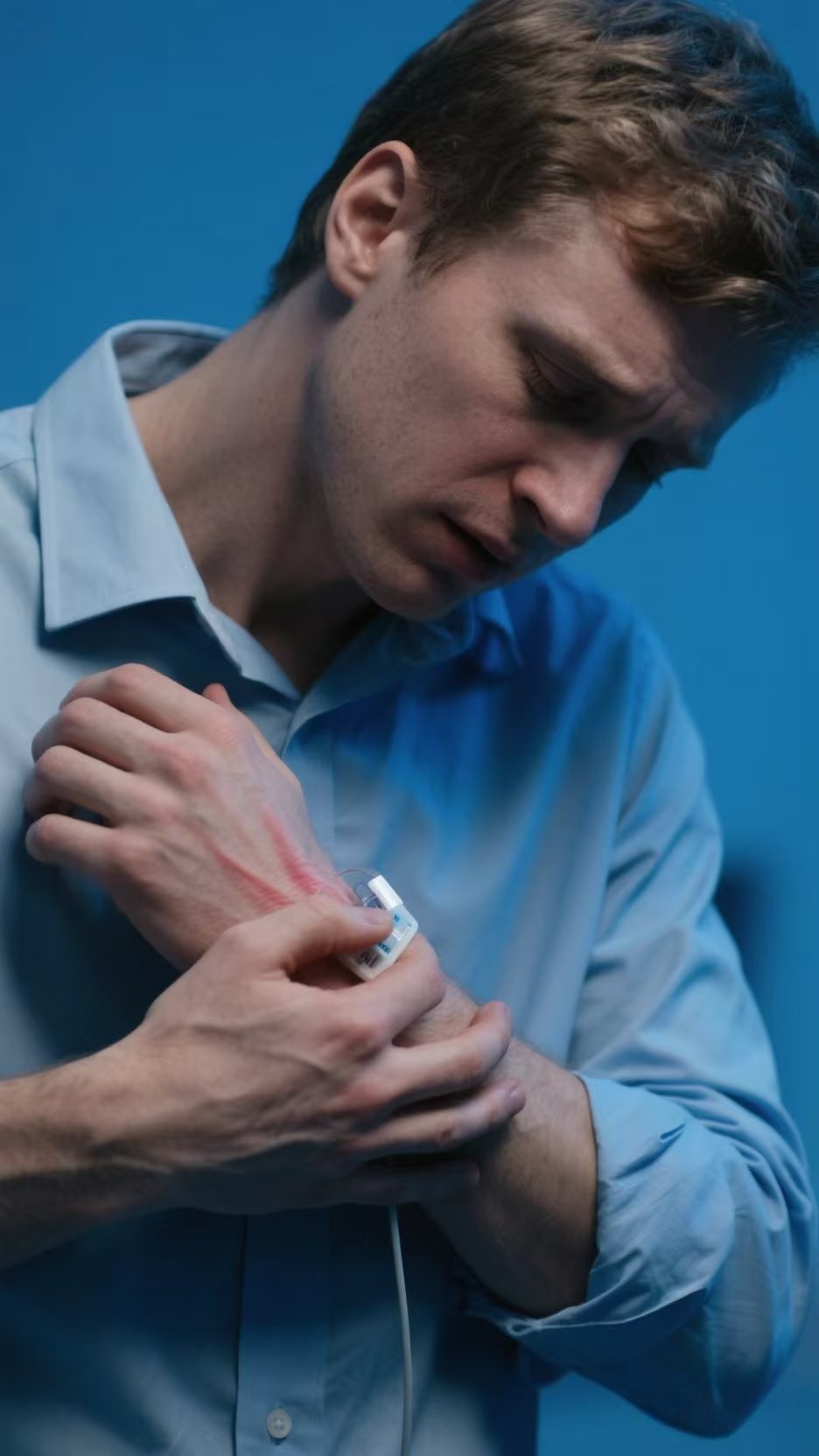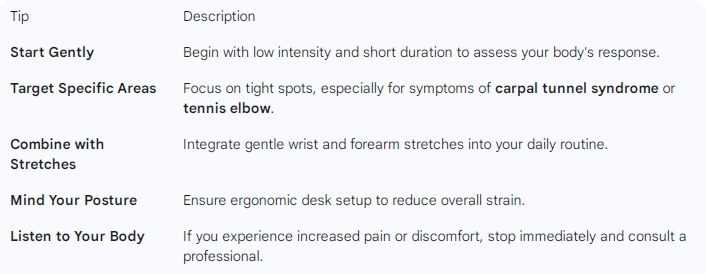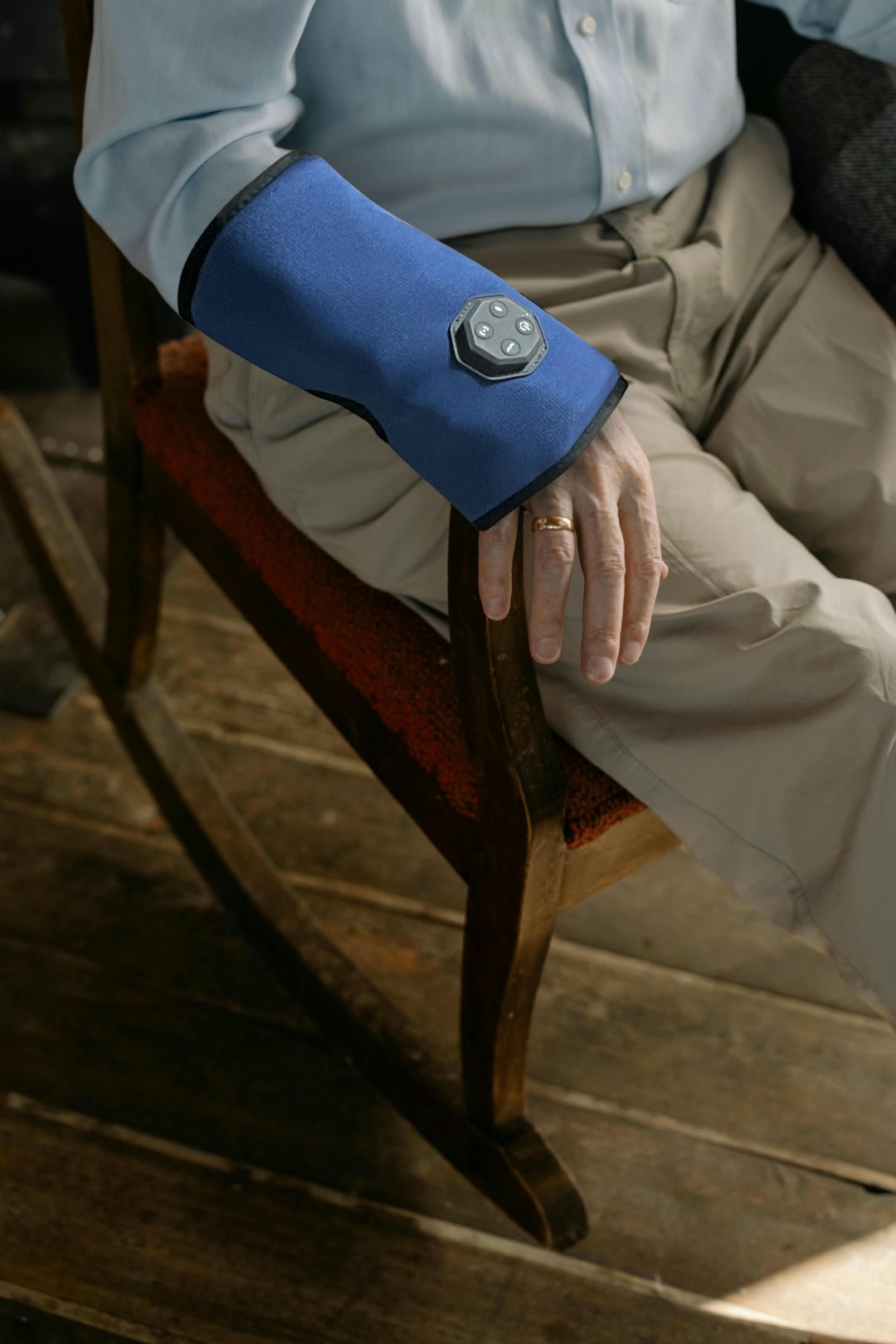Handheld Massager : Can It Really Fix Your Forearm Strain?
- By Grace
- Updated on
In our modern work landscape, especially for office workers, the persistent hum of keyboards and the click of a mouse can often lead to an unwelcome companion: forearm and hand strain. Many of us, myself included, have felt that familiar ache, the stiffness that settles in after a long day of repetitive tasks. It's a common concern, isn't it? The quest for effective relief often leads to various discussions—from traditional stretches to modern devices. Among the most debated solutions, the humble handheld massager has emerged as a popular contender. But can it really offer a pathway to genuine comfort and recovery? Let's delve into the science and practical applications to unravel this question.
What Happens When Your Forearm and Hand Feel the Strain?
The constant, repetitive motions common among office workers place significant stress on the forearm and hand, often leading to Repetitive Strain Injury (RSI) or Carpal Tunnel Syndrome. This cumulative effect causes intricate forearm muscles to become chronically tensed, which restricts blood flow and leads to inflammation and pain.
When these tissues are under constant duress, they can compress the median nerve in the wrist, causing Carpal Tunnel Syndrome. This condition is characterized by numbness, tingling, weakness, and pain in the hand and fingers, and can disrupt daily activities. Understanding these underlying physiological responses is the first step toward effective management and relief.

The Science Behind How a Handheld Massager Can Offer Relief.
At its core, a handheld massager alleviates strain by stimulating blood flow to the affected area. This increased circulation delivers oxygen and nutrients to fatigued muscles and flushes out metabolic waste, acting as a natural detox for overworked tissues. Beyond circulation, the massager's mechanical action physically loosens tight muscle fibers and breaks down minor adhesions. For conditions like tennis elbow, targeted pressure can reduce fascial restrictions and promote healing. Similarly, by reducing tension in surrounding forearm muscles, a handheld massager can indirectly alleviate pressure on the median nerve, making it a valuable complementary tool alongside a carpel tunnel brace. This process improves blood flow, promotes muscle relaxation, modulates pain signals, and reduces inflammation.
The Benefits of Integrating a Handheld Massager into Your Routine.
Incorporating a handheld massager into your daily routine offers benefits beyond simple pain relief, fostering a proactive approach to muscular well-being. Regular use can prevent minor discomforts from escalating into more debilitating conditions, empowering office workers and others with repetitive hand movements to maintain productivity and comfort throughout the day.
The impact can be significant, from easing stiffness after hours of typing to managing localized discomfort like that from tennis elbow. The massager promotes a feeling of relaxation and enhances circulation, which leads to better overall tissue health and long-term prevention of chronic strain. These tools provide targeted pain relief, enhanced circulation, and improved muscle flexibility, while also contributing to stress reduction and proactive wellness.
Exploring Types and Techniques: Finding Your Ideal Handheld Massager Solution.
The world of handheld massagers is surprisingly diverse, offering various approaches to tackle forearm and hand strain. From what I’ve gathered through extensive evaluation and user feedback, there isn't a one-size-fits-all answer. For instance, many crocheters, who certainly understand repetitive strain, often favor a simple combination of gentle stretching and a compact handheld massager, focusing on consistent, light application to keep their dexterity. It highlights that sometimes, the simplest methods, consistently applied, are truly the best.
Then you have more innovative solutions. I recall hearing about a user who even built a search explorer-like device specifically to target the forearm area, particularly for what felt like massage for tennis elbow. This really underlines the individual and often creative approaches people take to find relief. For players, whether professional or amateur, who often rely on **athletic wrist support** or experience significant arm stress, ergonomically designed hand and arm massagers are recommended. These devices, like some advanced models, often combine functions such as air pressure, heat, vibration, and even red light therapy, offering a multi-modal approach to deep tissue relaxation and recovery. When considering options, it's worth noting that while a **carpel tunnel brace** provides structural support, a **handheld massager** complements this by addressing the underlying muscle tension.
- Vibration Massagers: Good for general muscle relaxation and improving circulation.
- Percussion Massagers: Offer deeper tissue penetration for stubborn knots and intense strain.
- Compression Massagers: Often used for hands, using air pressure to gently squeeze and release, promoting fluid movement.
- Heat Functionality: Many advanced massagers include heat, which can further relax muscles and enhance blood flow.
- Ergonomic Design: Crucial for comfortable and effective self-application, especially important for devices intended for repetitive use.
Practical Tips for Maximizing Relief with Your Handheld Massager.
To get the most out of your handheld massager as an office worker, consistency is key. Use it for short, regular sessions (5-10 minutes) on areas of tension in your forearm, wrist, and hand, starting with gentle pressure and gradually increasing intensity.
Combine massager use with proactive measures like regular stretches and proper ergonomic posture at your desk to prevent strain from building up. This holistic approach makes the handheld massager an indispensable ally in maintaining comfort and preventing serious issues.

Yes, handheld massagers truly relieve forearm and hand strain, especially when used consistently as part of a thoughtful self-care routine. While not a magic bullet for every severe condition, their ability to enhance circulation, relax muscles, and alleviate discomfort makes them a valuable tool for proactive wellness, preserving your ability to perform daily tasks without pain.
Frequently Asked Questions About Handheld Massagers
Do hand massagers really work for pain relief?
Yes, hand massagers can be highly effective for pain relief, especially for discomfort caused by muscle tension, overuse, and poor circulation. They work by increasing blood flow, relaxing tight muscles, and stimulating nerve endings, which can help to reduce soreness and discomfort. Many users report significant relief from everyday aches and pains.
Can a hand massager help with arthritis pain in hands?
While a hand massager cannot cure arthritis, it can certainly help manage the associated pain and stiffness. The gentle compression, heat, and vibration offered by many models can improve circulation to the joints, reduce inflammation, and provide temporary pain relief. It's often recommended as a complementary therapy to traditional arthritis treatments, offering comfort and promoting flexibility.
Are hand massagers effective for carpal tunnel syndrome?
Hand massagers can be a helpful supportive tool for managing symptoms of carpal tunnel syndrome, though they are not a standalone cure. By relaxing the muscles and tendons in the forearm and wrist, they can help reduce overall pressure on the median nerve. They improve blood flow and can alleviate some of the tingling and numbness associated with the condition. For comprehensive care, it's often used in conjunction with a carpel tunnel brace and professional medical advice.





